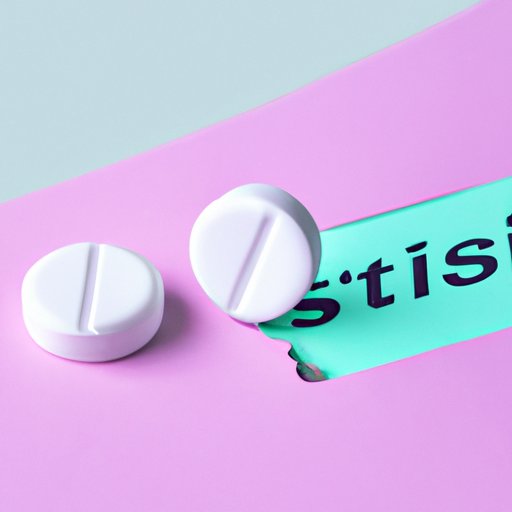
Introduction
Chlamydia is one of the most common sexually transmitted infections, affecting both men and women. It can be a serious health risk if left untreated, but it’s easily curable in most cases. In this article, we’ll take a closer look at chlamydia and explore the most effective ways to treat and prevent it.
Debunking the Myth: The Truth About Curing Chlamydia
Many people believe that chlamydia is a permanent condition that cannot be cured. However, this is a common myth. Chlamydia is, in fact, a curable STI – but it does require prompt and proper treatment to help ensure a successful cure.
Can Chlamydia Really Be Cured? A Closer Look
Chlamydia can manifest in different types, including genital, oral, and rectal chlamydia. Depending on the type of chlamydia, different treatment methods may be used, such as antibiotics. Treatment can typically take up to two weeks to fully cure the infection and get rid of the bacteria that causes it. Though chlamydia is curable, leaving it untreated can lead to more severe and long-term health issues, making it best to be treated sooner rather than later.
The Pros and Cons of Treating Chlamydia
The benefits of getting treatment for chlamydia are many, including avoiding potential long-term health problems and reducing the risk of transmitting the infection to others. However, there are also potential downsides to getting treatment, such as the possibility of experiencing antibiotic-related side effects or feeling embarrassed or stigmatized due to the STI diagnosis.
What You Need to Know About Antibiotics and Chlamydia
Antibiotics are the most common type of medication used to treat chlamydia. Common types of antibiotics that are used to successfully treat this infection include azithromycin and doxycycline.
It’s important to note that not everyone may experience side effects from antibiotics, but some side effects can include nausea and diarrhea. To ensure the most effective treatment, antibiotics should be taken as prescribed by a healthcare provider and should be completed even if symptoms have disappeared.
Alternative Treatments for Chlamydia: Do They Really Work?
While some may consider alternative treatments, like herbal remedies, to potentially cure chlamydia, these methods are not medically-proven and can even cause the infection to worsen; this is why it’s important to stick with medically-recommended treatment methods instead.
Preventing Chlamydia: The Best Defense
Prevention is key and the best way to protect oneself from contracting chlamydia. Practicing safe sex with consistent and correct use of condoms, avoiding unprotected sex, and getting regular STI screenings are all essential in the prevention of chlamydia. Additionally, the belief that condoms aren’t effective at preventing chlamydia is a common misperception – utilizing a condom during all sexual acts, is always recommended, in order to reduce one’s risk of contracting STIs.
Life After Chlamydia: Moving Forward with Confidence
Being diagnosed with an STI like chlamydia can understandably be a stressful experience, but it’s important to know that it’s a curable infection that can be treated. With proper treatment, one can get rid of the infection entirely and move on with a healthy sex life. You have the power to regain control of your sexual health, feel confident about your decisions, and move forward without worry or fear.
Conclusion
Chlamydia is one of the most common STIs and can be a serious health risk if left untreated. It’s curable, however, with proper treatment and prevention. Antibiotics can be effective and taking preventive measures like using condoms and getting regular STI screenings can reduce the risk of contracting chlamydia. We encourage all readers who may suspect that they have chlamydia to seek prompt medical attention and treatment.




